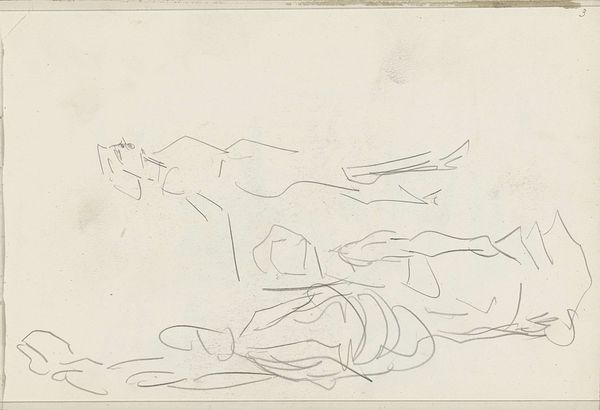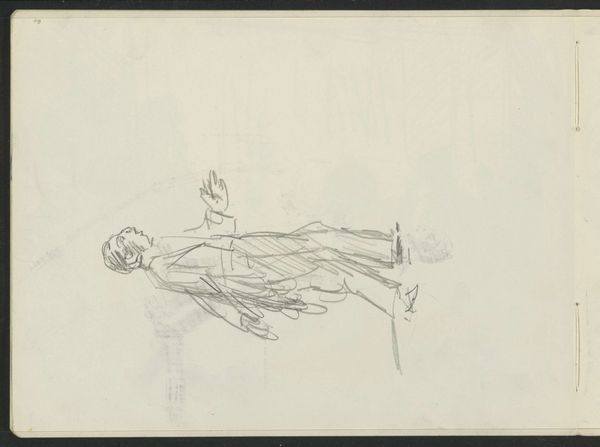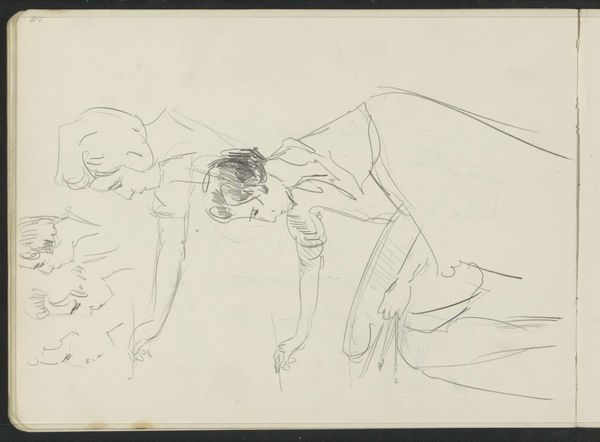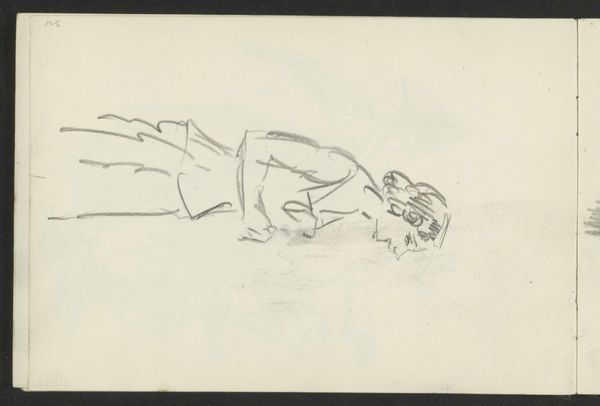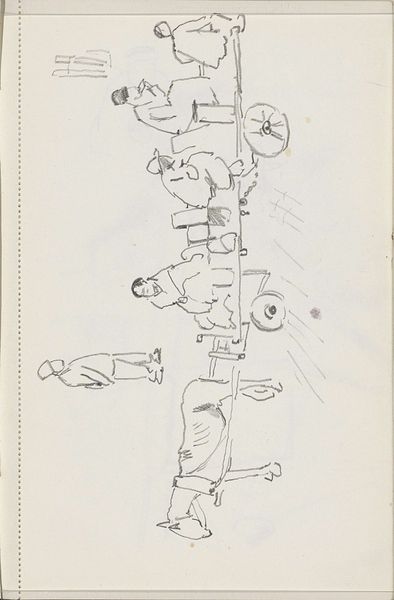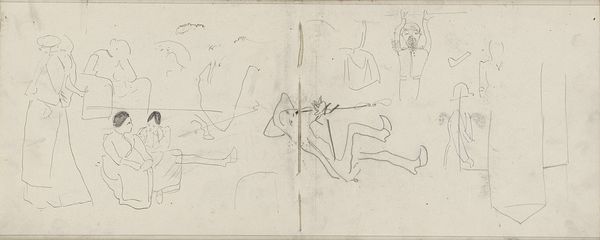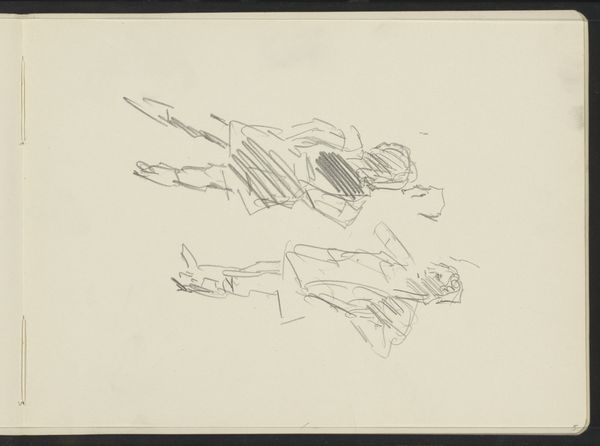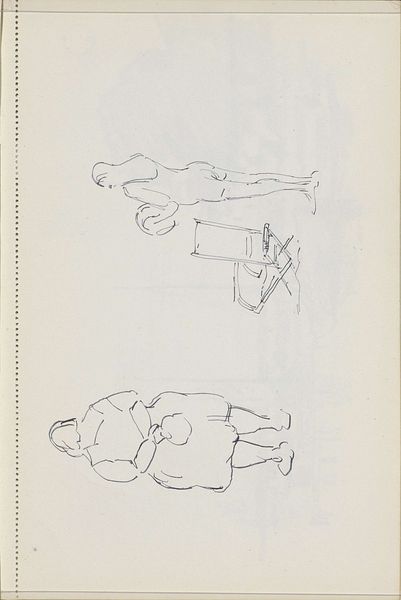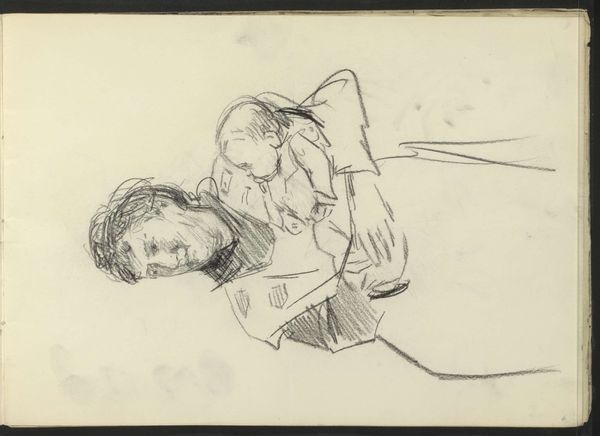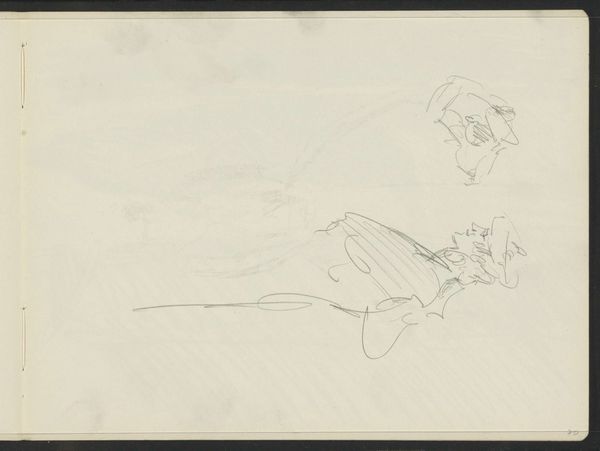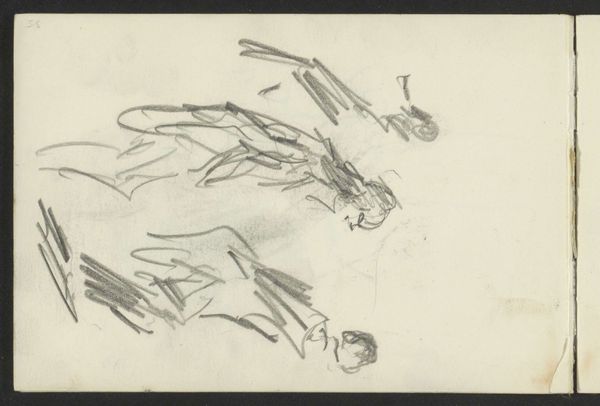
Copyright: Rijks Museum: Open Domain
Curator: This is "Mannen en vrouwen, mogelijk verkleed," or "Men and women, possibly disguised," a pencil drawing by Isaac Israels, made sometime between 1915 and 1925. Editor: It feels so immediate, like catching a glimpse into his sketchbook. The lines are sparse but convey so much energy and movement. It reminds me of hurried observations made while riding the train. Curator: Exactly. The visible pencil strokes invite us to consider his working method, the immediate translation of his gaze onto the page. We see several figures here. Notice the differences in their attire and implied social roles; there’s a real range represented through these simple lines. Editor: The ambiguity of "possibly disguised" is really intriguing. Disguise often reveals as much as it conceals. What kind of social performances were people enacting, and what norms were they either conforming to or pushing against? I wonder what he observed, how that time of the first world war impacted the way identities were portrayed through social clothing. Curator: Israels was fascinated by depicting everyday life. The speed of the pencil reflects that immediacy; there wasn't time for formal sittings or posed arrangements. The materiality of pencil itself adds to that feeling of spontaneity. These aren't formal portraits in the traditional sense. The accessibility of drawing materials like pencils allowed him to document life quickly. Editor: Right. It disrupts the power dynamic of traditional portraiture. The casual nature makes one wonder about the role of fashion and self-representation, especially during periods of rapid social and technological change in the 20th century. This work makes me consider marginalized voices within traditional canons of art history. It allows viewers from many backgrounds to access history. Curator: I agree. Seeing this in the context of a sketchbook illuminates how initial observations translate into the creation of larger, formal works of art and points us towards the labor involved in producing an artwork. Editor: I feel like I can appreciate the work as a time capsule. Each hastily drawn figure hints at their role in that past reality. A tangible echo. Curator: Indeed. These characters may seem distant but remain connected to us through his vision. Editor: Yes, and a vital reminder to question and examine whose stories are visible within the historical archive.
Comments
No comments
Be the first to comment and join the conversation on the ultimate creative platform.
